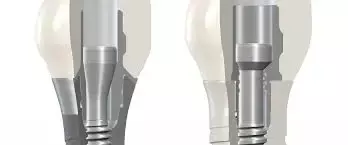- Home
- Medical news & Guidelines
- Anesthesiology
- Cardiology and CTVS
- Critical Care
- Dentistry
- Dermatology
- Diabetes and Endocrinology
- ENT
- Gastroenterology
- Medicine
- Nephrology
- Neurology
- Obstretics-Gynaecology
- Oncology
- Ophthalmology
- Orthopaedics
- Pediatrics-Neonatology
- Psychiatry
- Pulmonology
- Radiology
- Surgery
- Urology
- Laboratory Medicine
- Diet
- Nursing
- Paramedical
- Physiotherapy
- Health news
- Fact Check
- Bone Health Fact Check
- Brain Health Fact Check
- Cancer Related Fact Check
- Child Care Fact Check
- Dental and oral health fact check
- Diabetes and metabolic health fact check
- Diet and Nutrition Fact Check
- Eye and ENT Care Fact Check
- Fitness fact check
- Gut health fact check
- Heart health fact check
- Kidney health fact check
- Medical education fact check
- Men's health fact check
- Respiratory fact check
- Skin and hair care fact check
- Vaccine and Immunization fact check
- Women's health fact check
- AYUSH
- State News
- Andaman and Nicobar Islands
- Andhra Pradesh
- Arunachal Pradesh
- Assam
- Bihar
- Chandigarh
- Chattisgarh
- Dadra and Nagar Haveli
- Daman and Diu
- Delhi
- Goa
- Gujarat
- Haryana
- Himachal Pradesh
- Jammu & Kashmir
- Jharkhand
- Karnataka
- Kerala
- Ladakh
- Lakshadweep
- Madhya Pradesh
- Maharashtra
- Manipur
- Meghalaya
- Mizoram
- Nagaland
- Odisha
- Puducherry
- Punjab
- Rajasthan
- Sikkim
- Tamil Nadu
- Telangana
- Tripura
- Uttar Pradesh
- Uttrakhand
- West Bengal
- Medical Education
- Industry
Titanium and Zirconia Implants not significantly different in Peri-Implant Defect Development, reveals research

Researchers have found in a new study that significant difference was not observed in the rate of peri-implant defect development between titanium and zirconia implants. They found that both materials showed significant radiographic bone gain after regenerative surgery, with titanium implants achieving a higher defect percentage fill. However, the final clinical outcomes were similar for both implant types.
This study compared titanium and zirconia implant ligature-induced peri-implant defect progression and response to regenerative surgical intervention. Eight tissue-level endosseous implants were placed in 6 mixed-breed foxhounds, with 2 zirconia and 2 titanium alternating in each hemimandible. Cotton ligatures were placed subgingivally for 16 weeks followed by 8 weeks of spontaneous progression. Standardized radiographs were captured every 2 weeks to evaluate the rate of bone loss. Regenerative surgery was performed utilizing water-jet decontamination, enamel matrix derivative, and locally harvested autogenous bone. After 16 weeks of healing, final radiographic bone levels as well as probing depths, recession, and clinical attachment levels were assessed. Results: All 48 implants integrated successfully. The final average post-ligature radiographic defects were 2.88 and 3.05 mm for titanium and zirconia implants, respectively. There was no significant difference between materials in the rate of radiographic bone loss (p = 0.09). Following regenerative surgery, the total average amount of radiographic bone gain was 1.41 and 1.20 mm for titanium and zirconia, respectively. The percentage of defect fill was 51.56% and 37.98% (p = 0.03) for titanium and zirconia, respectively. Inter-group differences were minimal for clinical parameters at the time of sacrifice including periodontal pocket depths (p = 0.81), recession (p = 0.98), or clinical attachment levels (p = 0.51). No significant difference was found in the rate of peri-implant defect development between titanium and zirconia implants. Both materials gained significant radiographic bone following regenerative surgery with significantly greater defect percentage fill in titanium implants. The final clinical parameters were similar in both groups.
Reference:
Esplin KC, Tsai Y-W, Vela K, et al. Peri-implantitis induction and resolution around zirconia versus titanium implants. J Periodontol. 2024; 95: 1180–1189. https://doi.org/10.1002/JPER.23-0573
Keywords:
Titanium, Zirconia, Implants, significantly, different, Peri-Implant, Defect, Development, reveals, research,Esplin KC, Tsai Y-W, Vela K
Dr. Shravani Dali has completed her BDS from Pravara institute of medical sciences, loni. Following which she extensively worked in the healthcare sector for 2+ years. She has been actively involved in writing blogs in field of health and wellness. Currently she is pursuing her Masters of public health-health administration from Tata institute of social sciences. She can be contacted at editorial@medicaldialogues.in.


